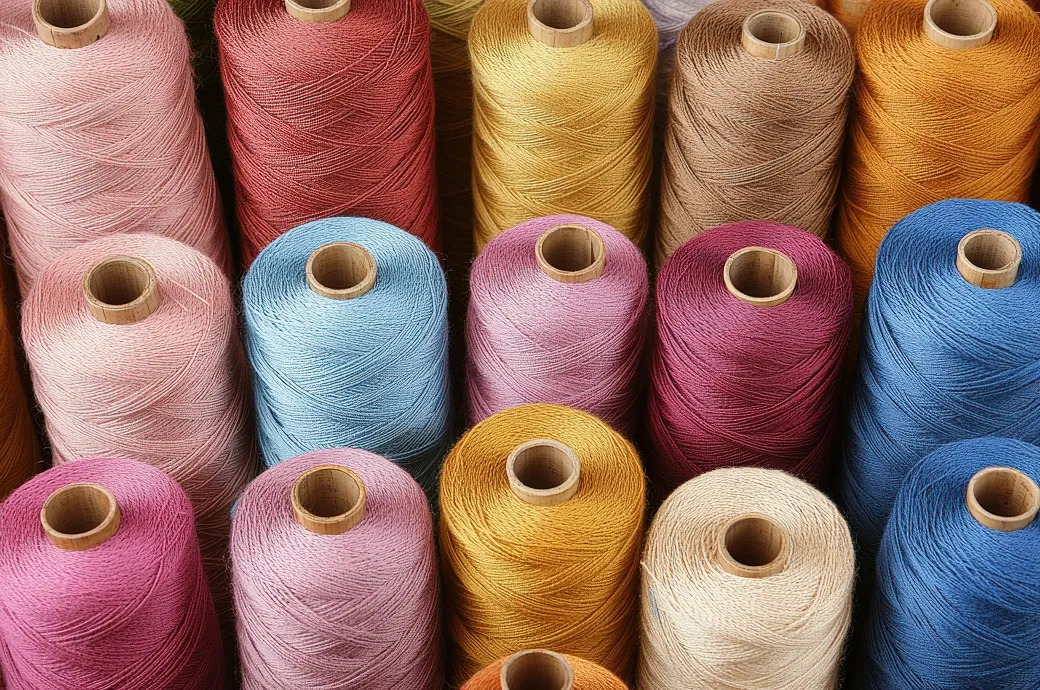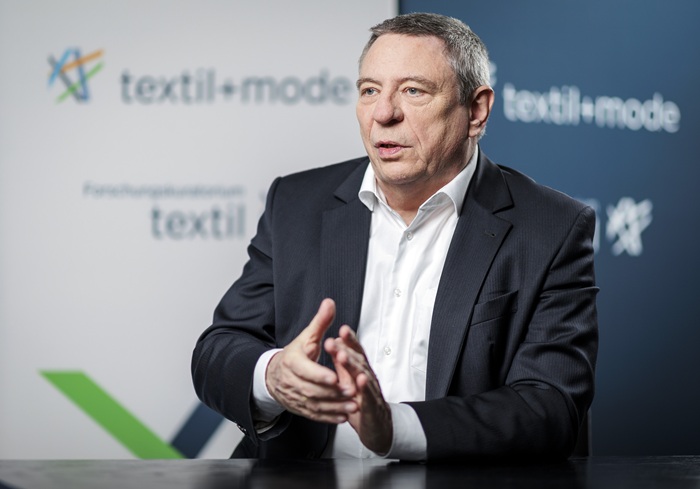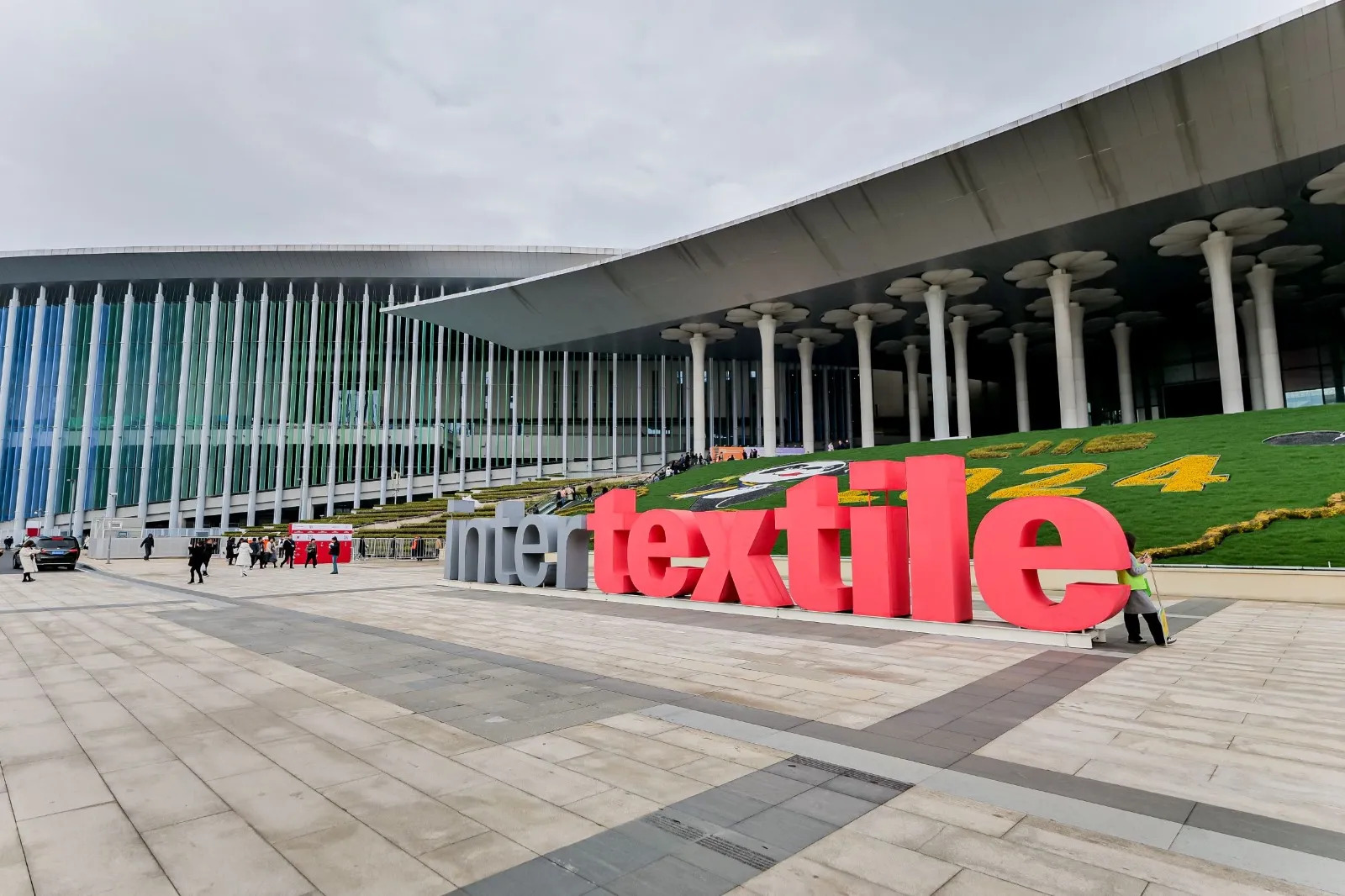FW
The RSS-affiliated Swadeshi Jagran Manch (SJM) has asked the government to remove Rs 49 royalty on genetically modified (Bt) cotton seeds, using Bollgard-II (BG-II) technology from the US company Monsanto. In a letter to the Joint Secretary (Seeds), Department of Agriculture, Cooperation and Farmers Welfare, Ashwani Kumar, national co-convenor of the SJM Ashwani Mahaja averred that the BT-II trait for which the government had fixed Rs 49 as trait value or royalty in 2016 and 2017 has become ineffective post 2015. "I request you to correct the mistakes done in the past by removing the trait value (royalty) for BG-II and reduce the MSP of Bt cotton seeds to farmers.
"….. The act of reducing the MSP of Bt cotton seeds would give some relief to the farmers."
He alleged that the trait developers have been misguiding the government on the “magic increase” in cotton productivity which he averred was "false propaganda" put out to cover up for the failure of Bt cotton and was a means to justify the collection of Rs 8000 crore in the form of royalty.
SJM Ashwani Mahaja quotes data, "From the published data of the Ministry of Agriculture, it is very clear that the cotton productivity hovered only between 450 kg to 500 kg in the period starting from 2007 till 2018. The BT cotton area was only 15 per cent of the total cotton planted in 2006 whereas it is 95 per cent over the last 7-8 years.” He also said the government should not encourage monopoly of Mahyco-Monsanto Biotech Limited (MMBL) by keeping the seed value of BG-I seeds low while being fully aware of the fact that the cost of production of BG-I seeds cannot be lower as compared to BG-II seeds. He was of the view that the same seed value should be maintained for both BG-I and BG-II seeds.
"The differential pricing between BG-I and BG-II is encouraging the monopoly of MMBL as nobody would produce BG-I seeds and incur loss. Due to this the farmers are suffering as BG-I seeds are not available in the market and they are compelled to buy only BG-II seeds thereby paying Rs 49 extra and thereby benefitting MMBL."
The 45th edition of IHGF Delhi Fair Spring 2018 concluded successfully at India Expo Centre and Mart, Greater Noida, with business enquiries valued at Rs 2700 crores said O P Prahldka, Chairman, EPCH. Prahladka said the fair played a significant role in exponentially increasing exports of handicrafts from the country where exports during the launch year 1994-95 which was Rs 3,159.62 crore has touched a phenomenal Rs 24,392.39 crore in 2016-17.
Around 5,300 overseas buyers from 111 countries and domestic volume retail buyers visited the show to source home, lifestyle, fashion and textiles products during five days extravaganza. Speaking on the occasion the chief guest Ajay Tamta, Minister of State for Textile praised EPCH for working so hard to increase exports of handicrafts by organising this fair twice a year and also for setting up infrastructures at different craft clusters in the country to provide product and design development facilities, use of technology to produce products in large quantities and also for providing marketing linkages to artisans and crafts persons.
Rakesh Kumar, ED-EPCH was happy with the knowledge seminars that discussed insightful subjects like: Cultural Differences Between East and West and How They Impact Business; How to Export to China with Specific Reference to Gifts, Decoratives and House ware; Symposium on Positioning of J&K handicrafts in Domestic and Overseas Markets; Goods and Service Tax; Intellectual Property Rights; Customs Trade Partnership Agreement Terrorism [C-TPAT]; Verification of Certified Forest Products and Trends and Forecast – Spring Summer 2019.
Buyers from the world’s most prestigious companies/ departmental stores were seen placing orders. These included Apropos International Inc., Anthropologie, Four Hands LLC, Brylane Home, Earthbound Trading, Cost Plus World Market, Imax Corpn, Kalalou, among others.
Walmart will launch four private label clothing brands as a part of a push to make deeper inroads into the apparel space and compete against rival Amazon, which is rapidly gaining market share in the category. The new private brands, which are owned by the retailer, will be available in Walmart stores and online starting March 1.
Walmart has been acquiring small online brands like Shoebuy, Modcloth and Bonobos over the past year to boost growth in the clothing and accessories business, where consumers are increasingly shopping online. Amazon’s apparel category has sharply gained popularity, with footwear and casual clothing proving to be the online retailer’s most popular categories and ease of browsing its biggest draw.
Walmart, which is still the largest clothing retailer in the United States, is upgrading the apparel section in its stores with improved displays, open floor plans and better fitting rooms.
For the second quarter of fiscal 2018 US Walmart’s total revenue rose 2.1 per cent. Comparative sales also increased 1.8 per cent with a traffic growth of 1.3 per cent, marking the 12th consecutive quarter with positive comparable sales. Nine of eleven markets posted positive comparable sales. The company is moving faster and becoming more creative as it strives to make every day easier for busy families.
The Sri Lanka Apparel Exporters Association Chairman Felix Fernando has asked the Indian government to enhance apparel quota system significantly or remove it completely. This will give the Sri Lankan apparel exporters more confidence in doing business in the Indian subcontinent, he feels. Since quota restrictions have been imposed, Sri Lankan can export only a certain quantity. The existing apparel quota is not sufficient enough for large scale Sri Lankan apparel manufactures to export to the Indian market and it is pertinent to remove these existing impediments to create win opportunities for both countries.
Sri Lankan apparel exports have grown substantially recording a 6 per cent growth over the last six months, the Association Chairman was of the view that the current trend would continue in the coming months. Sri Lanka currently exports fabrics and other materials from several ASEAN countries including China which are not eligible to receive the GSP Plus benefit. There is a need for a methodology to help the country’s manufactures to obtain required fabrics and materials from India rather than importing from several ASEAN Countries.
Special Assignments Minister, Sarath Amunugama pointes out the apparel quota was given not with the idea of restricting, it was given with the idea of stimulating trade. Today, that objective is not necessarily the utmost. Sri Lanka has well and now is ready to compete. Apparel is very sensitive product to India given its own apparel industry, the minister noted adding removing or improving the existing quota wouldn’t affect the extensiveness of the Indian market, but it would certainly be a nice gesture for a country like Sri Lanka.
Ascential, the company behind trade shows such as Pure London and information services such as WGSN, is looking at selling its exhibitions business. The business segment includes home and gift shows Spring and Autumn Fair; educational technology events for the Bett brand and Pure, London’s leading fashion trade show. Duncan Painter CEO disclosed, these brands are all number one in their markets and are of a size and scale that allows us to consider a variety of options to maximise their future value and enhance our overall organic growth rates. The company’s financial report recorded that Pure generated £9.1 million in revenue in 2017, down by 3 per cent on the previous year. During its two editions last year, the trade show garnered over 18,000 visitors and over 1,000 exhibitors.
The company Ascential is targeting its festivals and digital business, including WGSN. The global provider of intelligence, insight and trend forecast increased its revenue by 6 per cent to £73.6 million in the year as it exponentially expanded its customer base and product offerings. WGSN launched two new products during the year, Barometer, which provides customers with insight into their brand’s impact and Coloro, a new venture with China’s CTIC that offers universal categorisation of the colour spectrum for design professionals and manufacturers. This news could see Pure London sold individually or as part of a pack. The London fashion fair launched this month the Pure Origins platform to unite global fashion manufacturers and buyers.
Though the fashion industry is better known for its creativity, innovation, and trendsetting, it packs a major punch in terms of climate impact, water use, and pollution. Reasons that multiply this sector’s climate impacts are globalization (which moved manufacturing to countries without strong environmental controls), population growth, rapid increase in GDP (and hence purchasing power) around the world, and, most notably, fast fashion trends (that increased the amount of clothing people buy per capita).
The fashion industry is estimated to contribute eight per cent of the world’s greenhouse gas emissions. The biggest hot spot of concern in the global fashion industry is fabric dyeing and finishing, weighing in at 36 per cent of the sector’s total carbon footprint. There is a need to significantly reduce climate, water, and chemical use in this phase of apparel manufacturing.
Companies focusing their supply chain efforts on cut-and-sew garment factories. This is the final step in manufacturing where companies find it easiest to start but it is not where it is most important to work, as far as environmental impact is concerned. There is a need for companies to focus their efforts where the impact is greatest rather than waste time in areas of marginal impact.
The luxury goods industry is ripe for further M&A. Moet Hennessy Louis Vuitton SA (LVMH) the France-based luxury goods company is in a key position to lead industry consolidation through M&A and further extend its leading role. One can hardly think of an ‘American LVMH’. Even Coach and Michael Kors are fighting to become America’s luxury conglomerate and neither really fit the bill as a pillar of strength around which to build a luxury giant. Not only do they lack the strong cash profile necessary to finance such a strategic move, but even combined, the market capital of the four largest American soft luxury champions would be no match for a European challenger.
LVMH shows up as a clear leader to spearhead industry consolidation through M&A and further extend its lead. Kering, the international luxury group based in Paris, France which owns various luxury goods brands, including high-fashion labels such as Gucci, Saint Laurent and Alexander McQueen appears as the natural challenger. Not only does it have multi-category ambitions, it is could certainly move towards a high-profile merger.
A tie-up with Richemont SA the Swiss-based luxury goods holding company would be a master stroke. The Swiss luxury group announced recently that it was doubling down on its investments in high-end internet retail, making an offer of 2.8 billion euros, or about $3.4 billion, for the online fashion retailer Yoox Net-a-Porter.
Richemont’s strategy is an acknowledgment that wealthy consumers are increasingly comfortable buying an expensive watch with a click rather than a trip to an upscale store. Richemont may have ‘the filthy lucre’, but it also has a controlling family whose voting rights would be diluted by a high-profile merger. The group could also be on the receiving end of a bid/merger by one of the two French giants, LVMH or Kering
It would be amazing to see LVMH tie-up with Chanel. Given its footprint in cosmetics, Chanel would be even more desirable than Hermès and not as big as L’Oréal. On the practical side of M&A the choices are limited. One thing that seems certain is that any major moves are likely to be as dramatic as the French Moulin Rouge.
Levi Strauss has devised a new operating model that ushers denim finishing into the digital era. Project FLX (future-led execution) digitizes denim finish design and enables a responsive and sustainable supply chain at an unparalleled scale. By replacing manual techniques and automating the jeans finishing process, Project FLX radically reduces time to market — and eliminates thousands of chemical formulations from jeans finishing.
Using this method Levi Strauss can replace manual techniques and automate the time-consuming, labor-intensive and chemical-reliant process of hand-finishing. By using lasers in new ways, finishing time is cut dramatically – from two to three pairs per hour to 90 seconds per garment, followed by a final wash cycle.
By digitizing the finish design and development process, designers can now create finishes and final garments with a revolutionary new imaging tool. This advanced imaging capability cuts finishing design and development time in half (from months to weeks and sometimes days) and is so accurate the digital files can be sent directly to the vendor and quickly scaled to mass manufacturing.
Levi Strauss has begun piloting Project FLX with select vendors and retail partners and will roll it out across its supply chain in a phased approach over the next two years.
Lectra, the technological partner for companies using fabrics and leather, the French business school ESCP Europe and their joint ‘Fashion & Technology’ Chair explored the impact of Industry 4.0 on fashion’s value chain at a recent round table discussion at ESCP Europe’s London campus. From brands to manufacturers panellists from across the value chain stressed on the need for the industry to embrace alliance between man and machines to leverage enormous benefits from quicker decision-making to cost-reduction.
Exploring the advantages of Industry 4.0 technology, Evelthon Vassilou, CEO, Alison Hayes UK, disclosed, “Interpreting the data of what is and isn’t, selling should help to speed up decisions. You can react very quickly across the entire supply chain and either stop producing something unsuccessful or ramp up production if successful. Data and data analytics is not sufficient, to succeed this also requires a high degree of trust and integration between retailers and suppliers.”
Robert Diamond Founder and CEO, Fernbrook Partners said, “It’s about using technology to deliver continuous improvement in everyday business. People are not good at making a large volume of repeatable decisions with many different data inputs. If business decision, or the outcome of the resolution tomorrow, is pretty much the same as what happened yesterday, then there is a chance for machine learning to help improve the situation.”
Pierre Mercier, Senior Partner and MD, Boston Consulting Group noted that technology propelled by Industry 4.0 is disrupting former sources of competitive advantage, “forcing companies to rethink how they want to compete in their respective industries and how to use data to compete differently. The common denominator in the fashion ecosystem is that everyone is facing the opportunity for a step change and need to figure out where to double down and accelerate their transformation.”
UK fashion brand’s AllSaints, Dan Hartley, Global Head of Digital Commerce, shared his trade secrets, “We take customer feedback very seriously and we use it as a framework for our internal road map - from a tech and development point of view, through to design and fit, the customer is at the heart of everything we do.”
Guess will trace the sources of its wood-based fabrics like viscose, rayon and modal fibers. This is a bid to battle deforestation and protect the rights of people living in at-risk forests. Guess joins an array of fashion companies aiming to rid their supply chains of products from endangered forests.
The brand aims at embracing existing solutions as well as trying new ones to address social and environmental challenges. It’s taking the steps necessary to improve its supply chain. By 2020, it aims at making its global operations greener and encouraging consumers to buy more eco-conscious garments. This year Guess mapped its denim production by water availability and assessed the sustainability of its denim products. To improve its denim production and products, the company is currently drafting a comprehensive water action management plan to address these impacts, which is set to debut in 2018.
Production of wood pulp for fabrics can involve clearing forests to build eucalyptus plantations on land traditionally used by indigenous communities. Other companies to take similar measures include Abercrombie & Fitch, Ralph Lauren, L Brands, H&M, Zara, Levi Strauss and British fashion designer Stella McCartney.
Guess’s policy is another critical step in an industry-wide shift to take responsibility for the on-the-ground impacts of rayon and viscose fabrics. Wood-based rayon, sometimes called the poor man’s silk, is inexpensive and flexible, contributing to its popularity with clothing makers.












